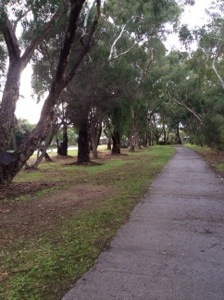;
Image courtesy of M-Pics/Freedigitalphotos.net
Last year, I started a Surfing history unit for the upper school and am now reteaching it to the current year 6 class. I like to add local content to my lessons wherever I can and our school is in an international surfing destination and many of the students surf. This term there was also an International Surfing Contenst run here. I find that many students are surprised to find out how recently international surfing came to our town.
We are learning note-taking skills using digital, online (websites and class blog) and paper sources. We have written a biography on Duke Kahanamoku. We are also creating a timeline using Excel and soon they will be taking on an individual research project. Choices include women in surfing, surfing offshoots like kite-surfing, the dangers of surfing and the future of surfing.
We created Movie Maker presentations last year but this year the class have access to 7 iPads and I am thinking about how we can use them to create the presentations. I am on a steep learning curve but am relying on the skills the students already have to teach me.
The Year 6’s have a class blog which their teacher uses on a daily basis to put up reminders, notes and links to information and websites that will help the students during the week. I have also included links to my lessons and have found that if I take the time to add content the students are more prepared for my lessons.
Next term the classroom teacher is considering using Edmodo as well and as this class were one of two classes I used Edmodo with last year, she need only do a basic run through and the students will be up and running with it. There are many benefits to using Edmodo including the ability to submit assignments.
 </a Image Courtesy of Cescassawin/freedigitalphotos.net
</a Image Courtesy of Cescassawin/freedigitalphotos.net
We are one of a few Catholic schools left in Western Australia who have Year 7’s. This year I thought I would tackle an Ancient History unit linked to the Australian Curriculum. I chose Ancient China. So far we have watched a segment of the Disney movie, Mulan and compared it to the story of Mulan and considered what features of Ancient Chinese Culture had Disney kept. We did a geography lesson and learnt about the natural barriers in Ancient China that were instrumental in developing Chinese culture. We have been learning about the various dynasties, some of the main characters and now they are involved in a Silk Road Board Game group project. It would be amazing if I had the ability to get the students to create an online game but it is beyond me at the moment. However, it is certainly something to strive for next year.
Here is a slideshow of today’s lesson.
Although we don’t have middle and upper primary “library lessons” here at school, our dedicated IT time is about 100 minutes which gives me plenty of time to develop the skills that would normally be classified as library lessons.
Next semester I will be focussing more on literature and am hoping to explore QR codes to deepen the engagement with the books in our library. I would like to try book trailers and will probably hold another event in the library like last year.










 </a Image Courtesy of Cescassawin/freedigitalphotos.net
</a Image Courtesy of Cescassawin/freedigitalphotos.net